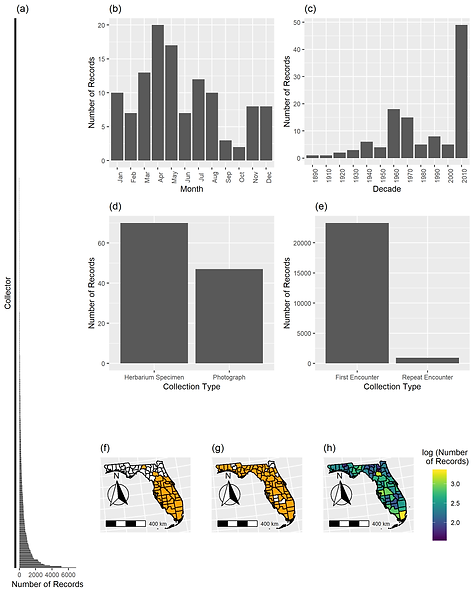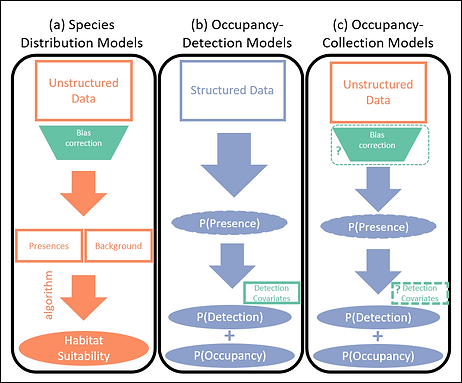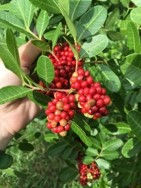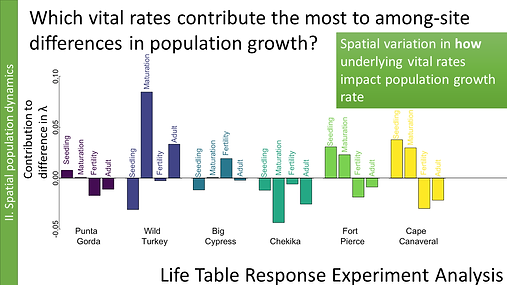Kelley D. Erickson

Incorporating collector behavior into occupancy-collection models for digital collections data

There are well-documented biases in digital collections data.
Among collectors of Anacardiacea in Florida, most collectors only collected a single record (a).
There is temporal variation in when records were collected at both the month and year scale (b and c).
Most of the records in our dataset were from herbarium specimens, although there were also a number of records from citizen scientists (d).
Most detections of the focal species represented the first time that collector had collected the focal species in a particular county (e).
Even the two most prolific collectors varied in the geographical range they covered (f and g).
There is spatial bias in sampling effort, with Miami-Dade county having the greatest number of occurrence records.
All of these examples are indicative of imperfect detection.

Species Distribution Models (a) are suited for using unstructured data to predict habitat suitability, but do not explicitly account for imperfect detection arising from collector behavior.
Occupancy-Detection Models (b) address imperfect detection, but are designed for use with structured data arising from systematic wildlife surveys.
Building on previous extensions of occupancy-detection models for use with systematic citizen science data, we explore Occupancy-Collection Models (c) which explicitly account for imperfect detection while still being amenable to unstructured digital collections data.
Read more about this work here and find R scripts associated with the project here.
Seedling maturation drives spatial variation in demography of the invasive shrub Schinus terebinthifolia in Florida



I constructed integral projection models using both plant height and basal diameter as state variables.
While there was little variation in the population growth rate across sites, there was spatial variation in how the underlying vital rates contributed to the population growth rate at each site.
Read more about this work in Biological Invasions.
Interactions between plants and their animal dispersers
Many plants rely on a vast suite of frugivorous animals to disperse their seeds. Yet not all frugivorous species are equal in terms of the quality of dispersal services they offer to plants. In addition, the composition of the community of potential animal dispersers available to disperse a plant's seeds may vary dramatically both throughout the dispersal season and from one year to the next. How do plants cope with temporal variability in dispersal?